You’ll find seven transformative filigree techniques that shaped jewelry history: Ancient Mesopotamian telkari wire twisting from 3,000 BC, Edwardian platinum setting methods that revolutionized delicate patterns, Art Deco die-cast geometric creations, Portuguese floral motif construction, Indian tarakasi traditional soldering, Maltese Phoenician-influenced thread weaving, and modern integration framework building. Each technique represents cultural identity while advancing metalworking craftsmanship through precise wire manipulation and soldering practices. These methods continue influencing contemporary luxury jewelry design and reveal fascinating stories behind each intricate creation.
Ancient Mesopotamian Telkari Wire Twisting Methods
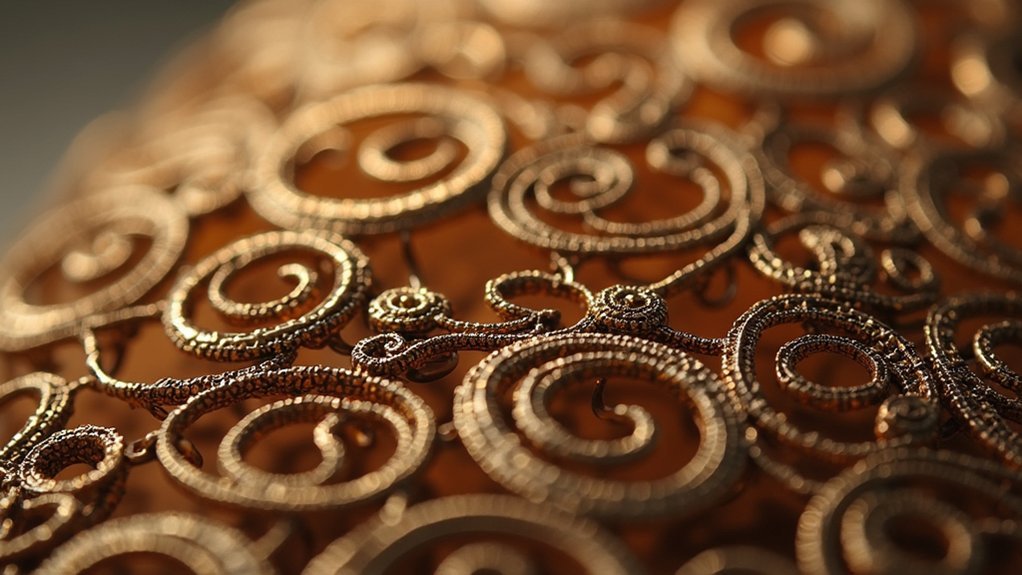
Mastery of telkari wire twisting emerged in ancient Mesopotamia around 3,000 BC, where skilled craftsmen developed intricate techniques for manipulating fine gold and silver wires.
You’ll find these artisans created delicate, lace-like patterns that became symbols of wealth and status throughout their civilization.
When you examine telkari methods, you’ll discover craftsmen preferred twisting precious metals into complex configurations before soldering them together.
These traditional methods allowed artisans to produce sophisticated filigree techniques that showcased exceptional skill levels. The intricate designs they created weren’t just decorative—they represented cultural identity and social standing.
Beyond mere ornamentation, these masterful wire patterns served as powerful symbols of identity and prestigious social position within ancient communities.
You can still observe telkari’s lasting influence today, as these ancient twisting methods spread throughout subsequent cultures, including Greece, and continue inspiring modern artisans in regions like Cuttack, India.
Edwardian Platinum Filigree Setting Techniques
When the Edwardian era began in 1901, platinum revolutionized filigree craftsmanship and ushered in an unprecedented golden age of delicate metalwork.
You’ll find that platinum’s superior strength and malleability allowed artisans to create intricate lace-like patterns previously impossible with other metals. These advanced techniques involved carefully soldering detailed wire patterns together, producing settings that perfectly showcased green garnets, amethysts, peridots, and emeralds.
You can see how Edwardian jewelers mastered complex platinum manipulation, creating monochromatic rings that reflected high society’s refined aesthetics.
Their filigree work set new standards for future generations, combining technical excellence with the era’s chic fashions. These settings emphasized opulence while maintaining the delicate, sophisticated appearance that defined Edwardian jewelry’s lasting legacy.
Art Deco Die-Cast Geometric Pattern Creation
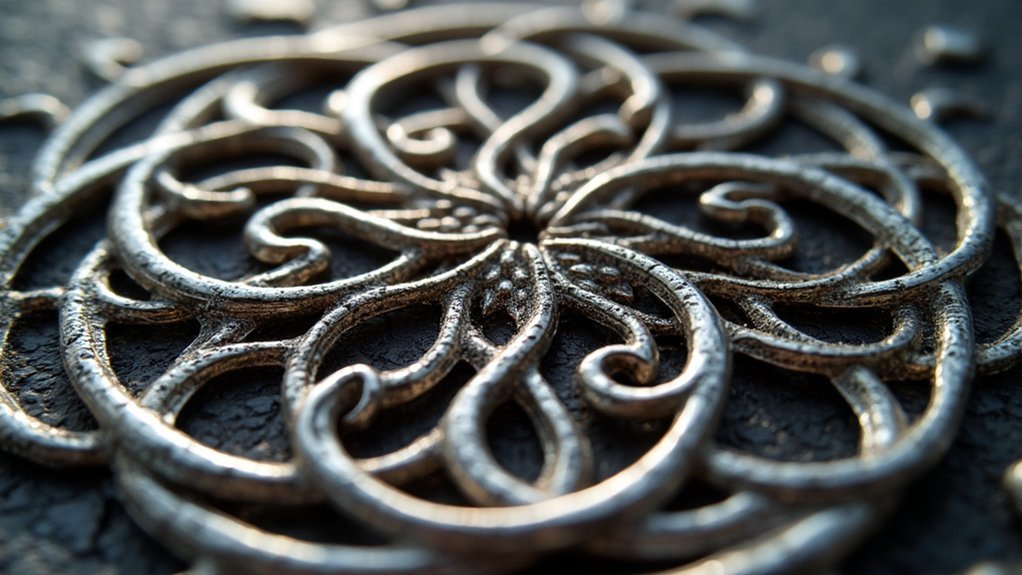
The revolutionary die-cast machinery of the 1920s transformed filigree production, allowing jewelers to create bold geometric patterns with unprecedented precision and efficiency.
During the art deco period, you’ll notice how modern technology replaced traditional handcrafting methods while maintaining filigree’s characteristic lightweight appeal. This die-cast machinery allowed artisans to reproduce intricate filigree designs consistently, making complex geometric patterns more accessible.
You’ll find that art deco filigree work emphasized striking contrasts through antique white diamonds paired with bold colors. These geometric patterns became the era’s defining aesthetic.
The technology guaranteed pieces of jewelry remained wearable despite their complexity. Iconic cocktail rings and brooches showcased this revolutionary approach, where intricate filigree met modern luxury, perfectly capturing the period’s emphasis on both innovation and elegance.
Portuguese Floral Motif Silver Construction
While Art Deco emphasized bold geometric precision, Portuguese artisans in regions like Porto and Viana do Castelo developed an entirely different approach that celebrated nature’s organic beauty through intricate floral motifs.
You’ll discover that Portuguese Filigree transforms delicate silver threads into stunning botanical representations through meticulous twisting and soldering techniques. This traditional craft, rooted in 15th-century heritage, creates lace-like patterns that capture local flora’s essence.
- Technique: Artisans twist and solder thin metal wires into organic patterns
- Materials: Fine silver and gold threads form the foundation
- Origins: Dating back to the 15th century with generational evolution
- Modern adaptation: Contemporary elements blend with classic designs
- Cultural significance: Preserves Portuguese heritage through artistic expressions
Today’s modern filigree faces production challenges yet continues thriving by balancing traditional craftsmanship with current fashion trends, ensuring this remarkable art form’s sustainability.
Indian Tarakasi Traditional Soldering Practices
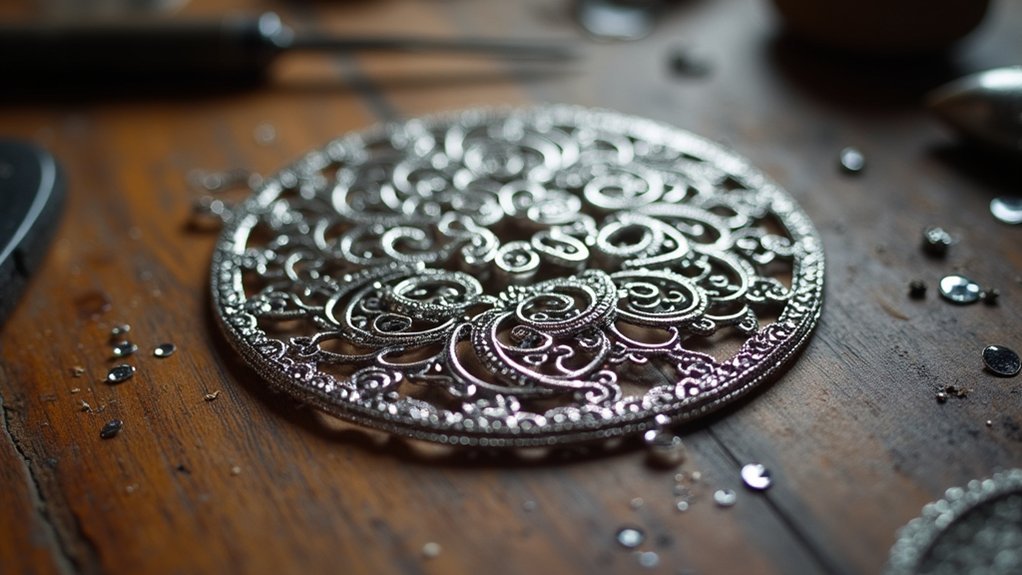
You’ll find that Indian tarakasi artisans work exclusively with wire alloys containing 90% or more pure silver, ensuring the exceptional quality and durability of their filigree pieces.
When you examine their traditional soldering methods, you’re witnessing techniques that have remained unchanged for generations, passed down from master craftsmen to apprentices.
These time-honored practices require you to heat and join the delicate silver wires with precision, creating the seamless connections that give tarakasi its distinctive lace-like appearance.
Pure Silver Wire Alloys
Although modern jewelry making has embraced various metal compositions, Tarakasi artisans in Cuttack continue crafting their delicate filigree using pure silver wire alloys containing 90% or more silver content.
You’ll find these traditional filigree masters preserve authentic methods that create intricate designs with remarkable precision. The high silver content guarantees ideal malleability while maintaining structural integrity for complex patterns.
When you examine Tarakasi pieces, you’re witnessing cultural significance embedded in every strand:
- Pure silver wire alloys provide exceptional workability for detailed motifs
- High silver content creates lustrous finishes that resist tarnishing
- Consistent metal composition guarantees reliable soldering results
- Traditional alloy ratios maintain lightweight characteristics
- Authentic formulations preserve historical crafting standards
These handcrafted jewelry pieces demonstrate how artisans balance material science with artistic expression.
Traditional Soldering Methods
Several traditional soldering methods distinguish authentic Tarakasi craftsmanship from contemporary jewelry-making techniques.
When you’re crafting filigree using these ancient practices, you’ll work with precious metal wire containing 90% or more pure silver content. The filigree technique involves twisting delicate wires into intricate patterns depicting natural motifs like animals and flowers.
You’ll master the precise heating process that joins twisted wires at specific contact points, requiring exceptional skill to avoid damaging the delicate metalwork.
In Odisha, artisans have preserved this rich history by evolving from traditional palm leaf methods while maintaining structural integrity.
Only a few skilled craftspeople in Cuttack continue these traditional soldering methods today, making authentic silver filigree an increasingly rare and valuable art form that bridges cultural heritage with contemporary design.
Maltese Phoenician-Influenced Thread Weaving
The ancient Phoenicians left an indelible mark on Maltese metalworking when they introduced their sophisticated filigree techniques to the Mediterranean archipelago around the 7th century BC.
This art form transformed how local artisans approached jewelry creation, establishing Malta as a center for exceptional metal craftsmanship.
You’ll find that Maltese filigree technique involves weaving delicate gold or silver threads into intricate patterns that reflect both heritage and artistic mastery.
- Delicate floral and geometric patterns characterize authentic Maltese filigree designs
- Thin metal wires are carefully woven into elaborate shapes without compromising structural integrity
- Traditional pieces include earrings, necklaces, and brooches showcasing cultural significance
- Hand-production methods preserve ancient techniques in contemporary Malta workshops
- Modern adaptations blend traditional craftsmanship with contemporary aesthetics for today’s market
Integration Filigree Complete Framework Building
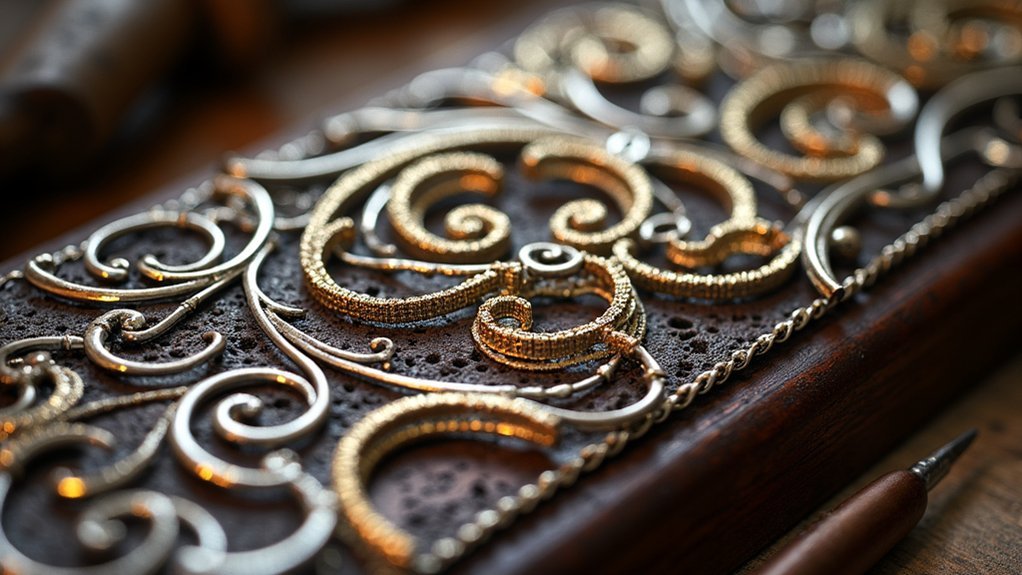
You’ll construct your entire jewelry piece from wire frameworks when mastering integration filigree, unlike application methods that rely on solid bases.
Your success depends on learning systematic wire framework construction methods that transform individual metal threads into cohesive structural elements.
As you advance, you’ll develop complete structure assembly techniques and integration mastery skills that allow you to create lightweight, intricate pieces rivaling those of ancient Greek and Etruscan artisans.
Wire Framework Construction Methods
When constructing an integration filigree framework, you’ll start by translating your detailed sketches into a three-dimensional wire structure that forms the backbone of your entire piece.
You’ll work with fine wires, typically gold or silver measuring up to 0.2mm in diameter, using twisting and plaiting fine techniques to create your filigree patterns. Each metal wire must be precisely positioned and soldered at contact points to guarantee structural integrity throughout your filigree jewelry making process.
- Position your finest wires according to your blueprint sketches
- Execute controlled twisting motions to create uniform thread patterns
- Apply strategic plaiting techniques for complex geometric formations
- Solder contact points systematically to maintain framework stability
- Verify dimensional accuracy before advancing to decorative elements
Complete Structure Assembly Techniques
Once your framework wire structure achieves proper dimensional accuracy, assembling the complete integration filigree requires methodical layering of decorative elements while maintaining the structural foundation you’ve established. You’ll carefully position each fine wires component, ensuring proper alignment before creating precise soldering points that bond pieces together seamlessly.
| Assembly Stage | Critical Focus |
|---|---|
| Initial Layering | Dimensional accuracy maintenance |
| Component Positioning | Wire tension balance |
| Final Soldering | Joint strength optimization |
Integration filigree demands patience as you build complexity through multiple decorative layers. Whether working with silver and gold or single metals, you’re creating modern designs that capture timeless beauty. Each soldered junction must support the overall structure while preserving the delicate aesthetic that makes integration filigree exceptional among traditional metalworking techniques.
Advanced Integration Mastery Skills
Although mastering integration filigree demands exceptional skill, developing advanced framework building techniques transforms your metalwork from simple decorative elements into structurally sound masterpieces.
You’ll need to understand metal properties deeply while executing intricate assembly processes that require years of dedicated practice.
When perfecting integration filigree, you must focus on:
- Manipulating fine threads of precious metals through precise twisting and shaping techniques
- Creating seamless interconnections that maintain structural integrity without solid bases
- Developing unity of design where every element contributes to overall stability
- Studying historical examples from ancient civilizations to understand traditional methods
- Balancing aesthetic appeal with functional durability throughout complex patterns
Your advanced skills in this specialized craftsmanship will distinguish truly exceptional pieces from basic decorative work.
Frequently Asked Questions
What Are the Different Styles of Filigree?
You’ll find two primary filigree styles: application filigree, where you add fine threads to solid surfaces, and integration filigree, where you craft entire pieces from delicate wirework, requiring greater skill.
What Is the History of Filigree Technique?
You’ll find filigree’s origins in ancient Mesopotamia 5,000 years ago, where craftsmen soldered twisted metal wires. Greeks adopted it, Edwardians popularized platinum settings, and Art Deco introduced geometric patterns using die-cast machinery.
What Era Was Filigree Popular?
You’ll find filigree’s been popular across multiple eras, starting in ancient Mesopotamia around 3000 BC, resurging during the Edwardian period (1901-1910), and flourishing again in the Art Deco era (1920s-1930s).
What Is the Difference Between Filigree and Cannetille?
You’ll notice filigree uses twisted fine metal threads creating delicate, airy lace-like patterns, while cannetille employs flat metal strips shaped into coiled designs that’re more three-dimensional and structurally sturdy.
What Is the Difference Between Milgrain and Filigree?
You’ll find milgrain creates textured edges with tiny metal beads, while filigree involves twisting fine metal threads into intricate lace-like patterns. Filigree’s more labor-intensive and requires higher craftsmanship than milgrain’s structural detailing.
In Summary
You’ve now explored seven remarkable filigree techniques that’ve shaped jewelry-making across civilizations. From Mesopotamian wire twisting to Maltese thread weaving, you’ll find each method offers unique artistic possibilities. Whether you’re drawn to Art Deco’s geometric precision or Portugal’s flowing florals, these traditional approaches can’t be replicated by modern machinery. Master these time-tested techniques, and you’ll connect with generations of artisans while creating extraordinary pieces that showcase filigree’s enduring beauty.

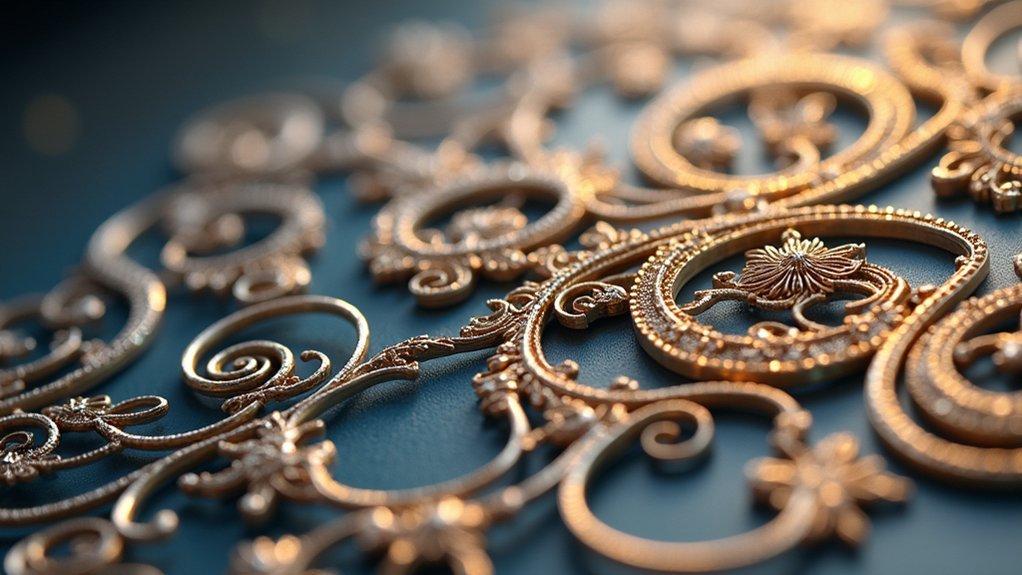
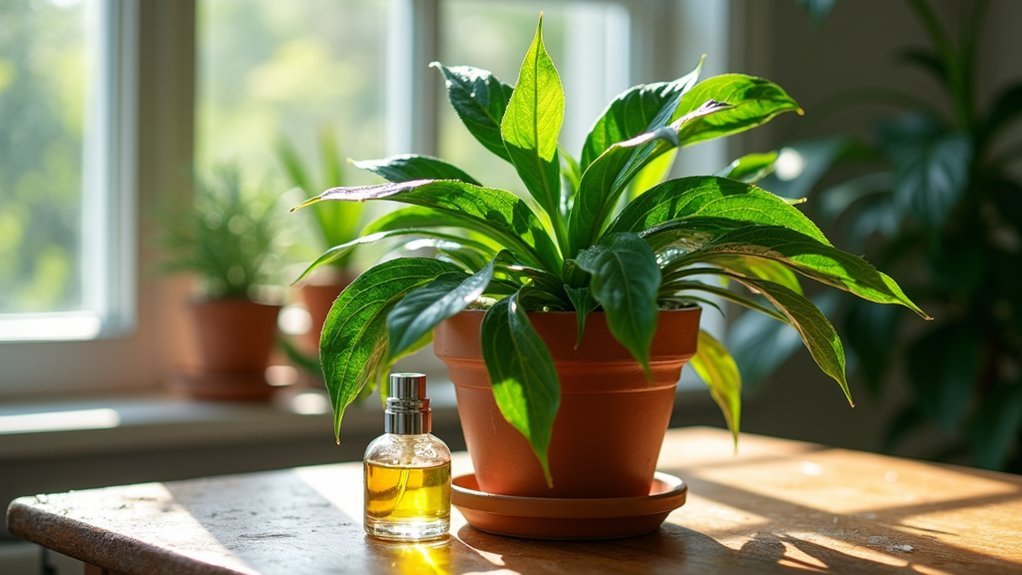
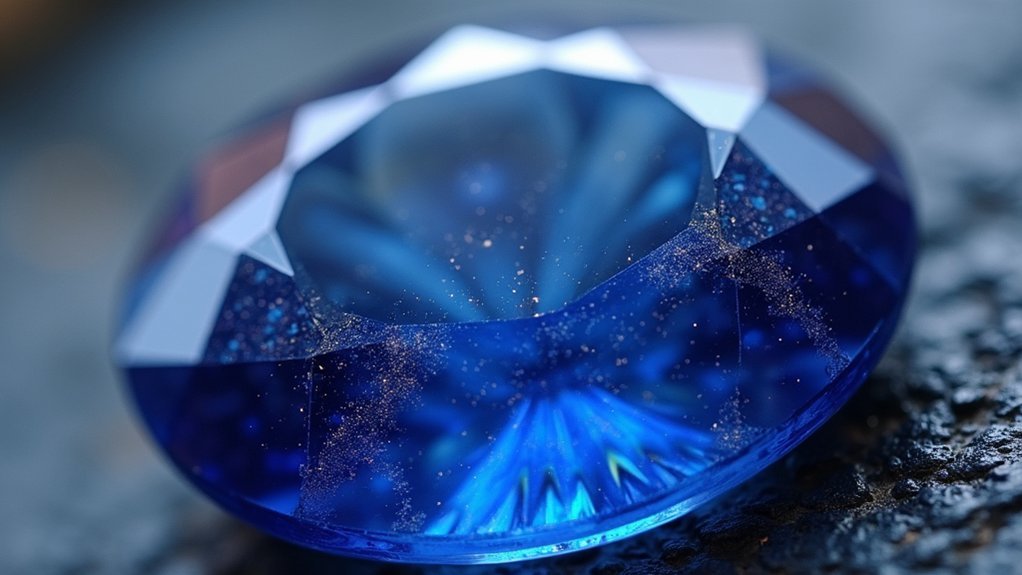
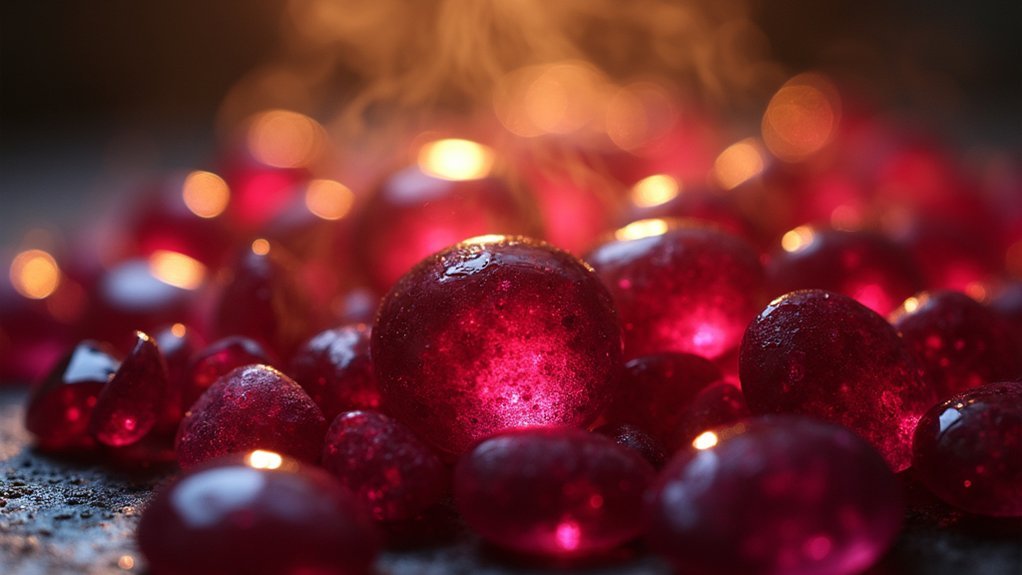
Leave a Reply